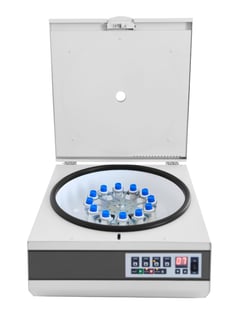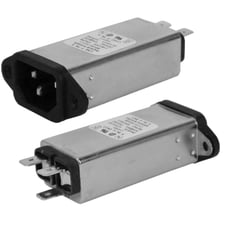RESOURCES
Case Study: Combating EMC Challenges in Laboratory Systems
 Achieving Unprecedented Efficiency by Addressing Conducted Emission with an Innovative EMI Filter Solution
Achieving Unprecedented Efficiency by Addressing Conducted Emission with an Innovative EMI Filter Solution
Laboratory equipment needs to maintain low electrical emissions to guarantee precise and dependable outcomes. This is especially crucial for devices like centrifuges, which are prevalent in clinical and research laboratories. Centrifuges play a vital role in separating particles based on their density in fluids, gases, or liquids. However, their performance can be hindered by high levels of electrical interference. By effectively minimizing conducted emissions, this filter solution ensures that the equipment functions at its best, consistently providing accurate results.
Uncovering EMC Hurdles in the Design and Production of Laboratory Equipment
While working with a lab centrifuge manufacturer, our team faced several challenges. We needed to meet the CISPR 11 conducted emissions standards and discovered that no standard component could solve the low-frequency failure issue. Furthermore, the type of noise—whether common mode or differential mode—was uncertain, complicating the design of a solution. Adding to the urgency, the customer was under pressure due to an upcoming product launch. The fact that the customer was overseas made data collection and testing solutions more difficult. The limited space available further restricted our options, eliminating the possibility of using a longer dual-stage filter. Finally, securing safety approval for a custom solution added another layer of complexity to our task.
 Overcoming Obstacles to Provide an Innovative EMI Filter Solution for Laboratory Equipment
Overcoming Obstacles to Provide an Innovative EMI Filter Solution for Laboratory Equipment
To tackle the issue of high electrical emissions in laboratory equipment, our team initially attempted to enhance the common mode insertion loss. However, this strategy did not produce the expected outcomes. We then redirected our efforts towards boosting the differential mode insertion loss by modifying the X-cap. Considering the space constraints, we meticulously optimized the X-cap to achieve an ideal balance between size and performance. This optimization allowed us to increase the X-cap from 0.1uF to 0.68uF, enabling the customer to pass the emissions test successfully. It is crucial to mention that this alteration in the X-cap led to the nullification of agency approvals. To address this, we performed UL1283 and IEC 60939 testing at our in-house safety lab, and impressively, within 8 weeks, we secured new certifications. ATDI distinguishes itself through its ability to customize our MOD-Std products to cater to the specific requirements of our customers, along with our swift technical support, sample provision, and in-house agency certification capabilities.

